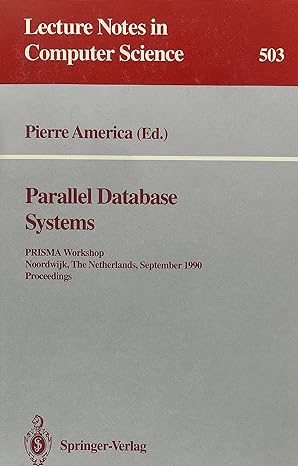Question
The US Patent and Trademark Office (USPTO) has made available a large data set for the Cancer Moonshot project. It captures 269,353 patent documents (published
The US Patent and Trademark Office (USPTO) has made available a large data set for the Cancer Moonshot project. It captures 269,353 patent documents (published patent applications and granted patents) spanning 1976 to 2016. You can download the data as well as a Word document explaining the different independent variables and codes used by following this link: https://developer.uspto.gov/product/cancer-moonshot-patent-data
The purpose of this assignment is to understand both how companies have approached the fight to cure cancer over time and how the innovation portfolio of big pharma companies has been evolving over time (of course there is a lot more to their innovation portfolio than the patents they hold or have applied for, but thats a good start.) As such, it is a bit more geared toward descriptive analytics and managerial insights than our other assignments.
Note: patent family in Column A is a group of patents, listed in column B. So the number in Column A may be repeated multiple times with a different patent number in Column B. Also, for some columns such as F, sometimes there are multiple names in the cell separated by a semi-colon.
Deliverables: a Word document suitable for a business manager in a format similar to Project 1 and source codes such as R file and, if applicable, Tableau packaged workbook. You must justify all your answers.
Show the evolution of patent documents over time (column D) by category (column M through U). Also consider the evolution by decades (1976-1985, 1986-1995, 1996-2005, 2006-2016). Which categories do you think will continue to grow, or do you think it is not possible to answer?Plot the distribution of the time it takes for a patent application to be granted (difference between filing data and grant/publication data, Columns D and E). Has this changed over the decades?
Which patent families (Column A) have the most patents (Column B)? Which classifications (columns F through K) appears the most often for the whole data set, and if you split the data by decades? Do you see any trend?
How many patent documents have received NIH funding (Columns V and W)? In which categories were those? Which organizations have received NIH funding most often (as measured by patent documents)? In particular, which academic organizations? Research them online and discuss whether the academic organizations that appear most often in the file are the ones that are best known or not.
How many patent documents have received FDA approval (meaning columns X and beyond arent empty)? For the patents with FDA approval (those with data in columns X and beyond), which FDA drugs (column Y) have the most patents? What category do they belong to? What codes in column F through K do they have in common, if any (read the Word file on the Cancer Moonshot website for descriptions) or not?
For the FDA Drugs with the most patents in Column Y, research revenue estimates online (price, estimated market size, estimated revenue per year, any financial data you can find online, if any). Which categories (column through U) do you think are the most lucrative and do you see that companies tend to focus on the most lucrative categories or not?
For the patents with FDA approval (those with data in columns X and beyond), which companies (column AA) have the most patent documents and how have those numbers of patent documents evolved over time? For the companies with the largest number of patents (define largest), how are those patents diversified across categories (column M through U)? Which company do you think has the strongest patent portfolio?
Do companies that have received FDA approval have differentiated strategies for the war against cancer, meaning, does their portfolio of patents focus more on certain categories (F through K or M through U)?
Analyze the dataset in some interesting way not mentioned above.
Step by Step Solution
There are 3 Steps involved in it
Step: 1

Get Instant Access to Expert-Tailored Solutions
See step-by-step solutions with expert insights and AI powered tools for academic success
Step: 2

Step: 3

Ace Your Homework with AI
Get the answers you need in no time with our AI-driven, step-by-step assistance
Get Started


